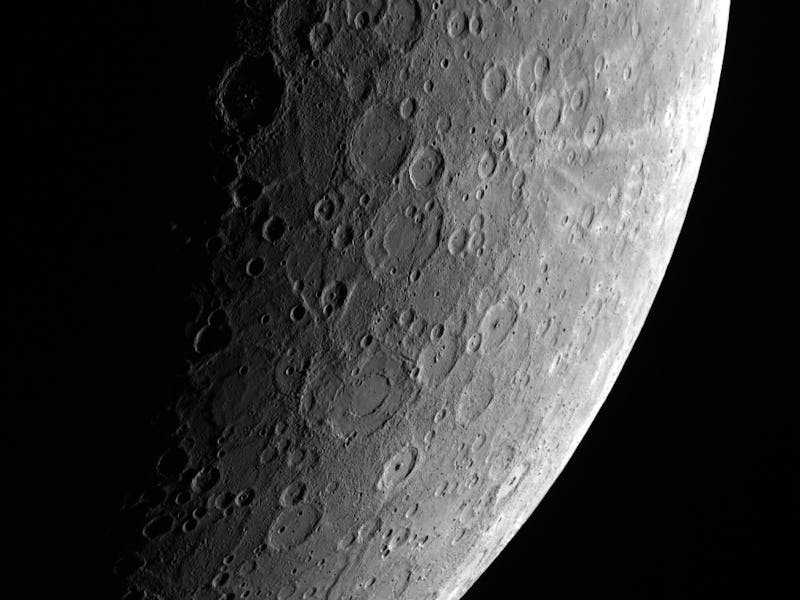Carbon Dust Eats Up Light Reflected on Mercury, Making It the Dark Planet
A carpet of light-absorbing carbon is responsible for the innermost planet's characteristic darkness.

The blackness shrouding Mercury, the solar system’s angsty teen, has puzzled scientists for years. With a surface just like our Moon’s, it should be a lot better at reflecting the sun’s rays, yet new craters kicking up the planet’s dust appear to only reflect two-thirds as much light as our lunar satellite. Something on the dark planet’s surface sucks in light, but it was never clear what that thing was until now.
Building on previous research, a team at the Johns Hopkins University Applied Physics Laboratory has just confirmed a hunch that Mercury’s light gets eaten up by a thick carpet of carbon dust on its surface.
The carbon theory was suggested in 2015 to replace the idea that elemental iron was the only darkening material on the planet’s surface, but it was only supported indirectly through modeling and simulation.
The new research, published today in Nature Geoscience, looked to neutron spectroscopy data from NASA’s MESSENGER mission as proof.
The MESSENGER spacecraft had been orbiting Mercury for four years until it dive-bombed into the planet in April 2015, getting close enough to confirm that the dark circles ringing its craters were full of carbon kicked up from layers of graphite beneath the planet’s surface.
As for how the carbon got there in the first place? Previously, researchers thought it was delivered there by comets, which tend to crumble apart as they approach the sun, dropping their cometary dust — which is up to 25 percent carbon by weight — onto the planet’s surface. But the team behind the new work suggests that some of it is probably Mercury’s own, leftover from the planet’s early days, when it was covered with a lake of molten magma.
How many pencils could you make from the planet Mercury?
It’s thought that the graphite — a particularly buoyant configuration of carbon molecules also found at the inner hearts of pencils— would have risen to the surface and stayed there, forming part of the original crust. The researchers suggest that millions of years of being bombarded by meteorites and comets led to the graphite dust being kicked up from beneath Mercury’s surface topsoil, painting the planet black.
Though the new findings shed light on Mercury’s literal darkness, they also provide fodder for our already-irrational belief in its metaphorical darkness, championed by the fools who tell you “Mercury is in retrograde” when things go awry.